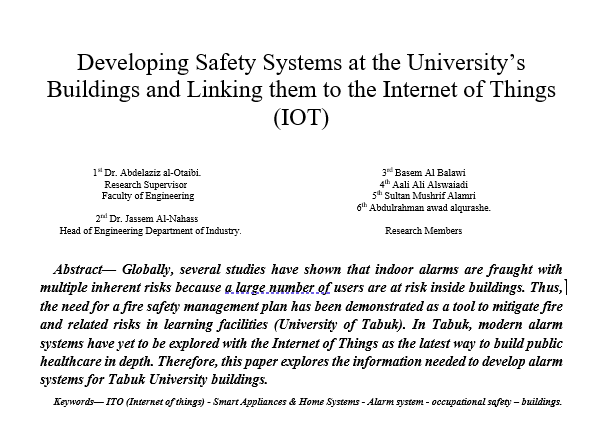
نظام كشف التسلل باستخدام خورازمية تقارب الانتشار المعدلة وخورازميات التصنيف pdf
ملخص الدراسة:
Network security is one of the most serious problems in the world because of the continuing increase in malicious activities and networks attacks. The increasing use of web services in many systems such as e-government services, banking services, E-mail and e-commerce expose these services to several types of malicious attacks. Intrusion Detection Systems (IDS) are widely used to protect information systems and reduce the damage caused by these attacks. Some of the malicious activities are still hidden, and there is an urgent need to continue in developing new effective and adaptive approach to countermeasure such activities. Many studies try to find the best model for IDS to achieve the best detection rate and lowest false alarm rate. Various artificial intelligence and data mining algorithms have been used in this field such as Clustering algorithms, Neural Networks, Naïve Bayes, Decision Tree, etc. IDSs are divided into two main types: misuse detection and anomaly detection. The former is used to detect known attacks by extracting features from network traffic, matching them to a list of signatures, while the latter identifies any anomalous behavior by computing deviation from normal behavior. This study proposes a new clustering algorithm called IWC-KAP for large-scale data sets. IWC-KAP can directly generate K clusters, as specified by the user. It retains the advantages of K-Affinity Propagation and Inverse weighted clustering algorithm. Experiments on IWC-KAP show that it can generate K clusters directly without any parameter tuning, and can cluster large-scale data more efficiently than other related algorithms. Moreover, given a specified cluster number, results show that the proposed clustering method can significantly reduce the clustering time and produce better clustering result in a way that is more effective and accurate than AP, KAP, and HAP algorithms. Furthermore, the study used the IWC-KAP to propose two hybrid anomaly detection models to improve the performance of intrusion detection system in term of detection, accuracy, and false alarm rate. The first model combines IWC-KAP Clustering algorithm and Naïve Bayes algorithm. IWC-KAP uses to cluster all the data into clusters based on their behavior, such as malicious and non-malicious activities. In the second phase, Naïve Bayes classifier uses to classify clustered data into correct categories. The second model combines IWC-KAP algorithm and Decision Tree algorithm instead of Naïve Bayes classifier. KDD Cup '99 dataset is used for training and evaluating the performance of the proposed models.
توثيق المرجعي (APA)
خصائص الدراسة
-
المؤلف
Serdah, Ahmed M
-
سنة النشر
2015
-
الناشر:
الجامعة الإسلامية - غزة
-
المصدر:
المستودع الرقمي للجامعة الإسلامية بغزة
-
نوع المحتوى:
رسالة ماجستير
-
اللغة:
English
-
محكمة:
نعم
-
الدولة:
فلسطين
-
النص:
دراسة كاملة
-
نوع الملف:
pdf



